What Is The Best Companion Plant for Strawberries: A Guide to Companion Planting
- March 20, 2024
- 0 comment
Strawberries, with their sweet flavor and vibrant red color, are a favorite among gardeners. However, like many plants, strawberries thrive best when grown in conjunction with other plants. This practice, known as companion planting, can lead to healthier growth and better yields. In this article, we will explore the best companion plants for strawberries and how they benefit each other.
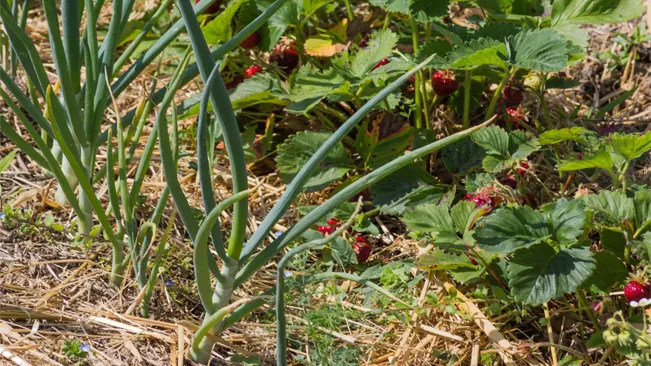
Understanding Companion Planting
Companion planting involves growing different plant species together to mutually benefit each other. This can be through pest control, pollination, nutrient uptake, and providing physical support. When it comes to strawberries, selecting the right companions is crucial for maximizing their growth and fruit production.
- Pest Control: Certain plants can repel or attract insects, either protecting their companions from harmful pests or drawing them away. For instance, marigolds repel nematodes and garlic deters aphids, both of which can be problematic for strawberries.
- Pollination: Some plants attract pollinators like bees and butterflies, which are necessary for many plants to produce fruit, including strawberries. Flowers like borage are particularly good at attracting these beneficial insects.
- Nutrient Uptake: Different plants have varying nutrient needs and uptake patterns. Companion planting can ensure more efficient use of soil nutrients. For example, legumes like bush beans fix nitrogen in the soil, which can be beneficial for nitrogen-loving strawberries.
- Physical Support: Some plants can provide physical support to others. While this is less applicable to strawberries, in other plant pairings, one plant might provide a trellis for another to climb.
- Soil Health: Diverse planting can improve soil structure and health. Different root systems can help aerate the soil, and the decay of plant matter from various sources can enrich the soil with a range of nutrients.
Companion Planting with Strawberries
When it comes to strawberries, choosing the right companion plants can enhance yield, reduce disease, and improve flavor. Here are some specific considerations:
- Marigolds and Garlic for Pest Control: Both of these plants are excellent at repelling certain pests that can be harmful to strawberries. Garlic, in particular, is known to ward off aphids.
- Borage for Pollination and Flavor: Borage not only attracts pollinators, which are vital for strawberry plants to bear fruit, but it’s also believed to enhance the taste of the strawberries themselves.
- Bush Beans for Nitrogen Fixing: Strawberries benefit from the nitrogen fixed in the soil by bush beans, promoting better growth and fruit development.
- Thyme and Other Ground Covers for Weed Suppression: Ground covers like thyme can help suppress weeds, retain soil moisture, and even provide some pest control benefits.
- Spinach and Lettuce as Space Maximizers: These leafy greens have similar water needs and can be planted closely with strawberries to maximize space and create a diverse planting environment.
Best Companion Plants for Strawberries
Borage
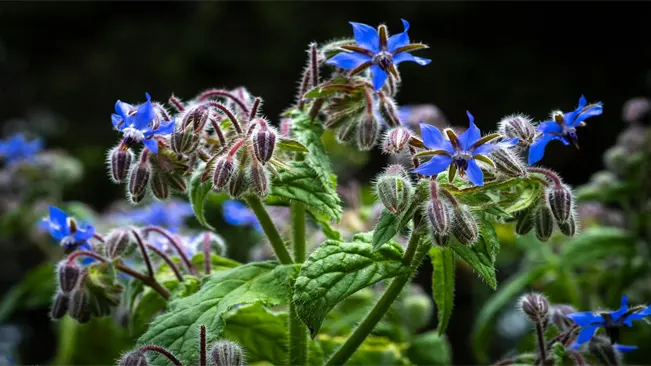
- Pollinator Attraction: Its vibrant blue flowers are very effective at attracting bees and other pollinators. This is crucial for the pollination of strawberry flowers, leading to better fruit production.
- Flavor Enhancement: Some gardeners believe that borage can actually improve the taste of strawberries grown nearby, although this is more anecdotal and not scientifically proven.
- Pest Deterrence: Borage is also known for its ability to deter certain pests, potentially providing a protective effect to the strawberry plants.
Marigolds
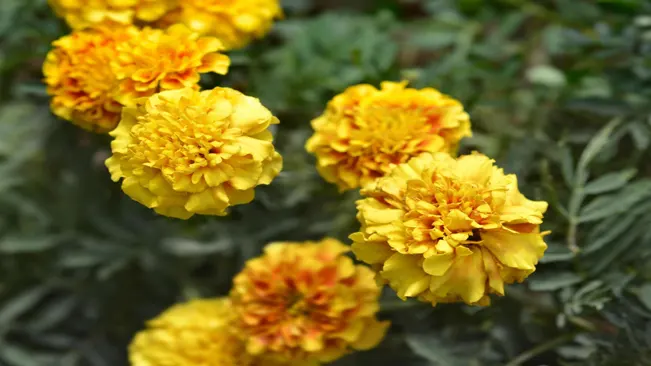
- Nematode Control: Marigolds exude a substance through their roots which can deter nematodes, a type of soil-dwelling pest that can damage strawberry roots.
- Broad-Spectrum Pest Repellent: Beyond nematodes, marigolds are also known to repel a variety of other garden pests.
Bush Beans

- Nitrogen Fixation: They have the ability to fix nitrogen in the soil, which is a crucial nutrient for the healthy growth of strawberries.
- Ground Cover: Bush beans also provide a natural ground cover, reducing weed growth and helping to maintain soil moisture levels.
Garlic
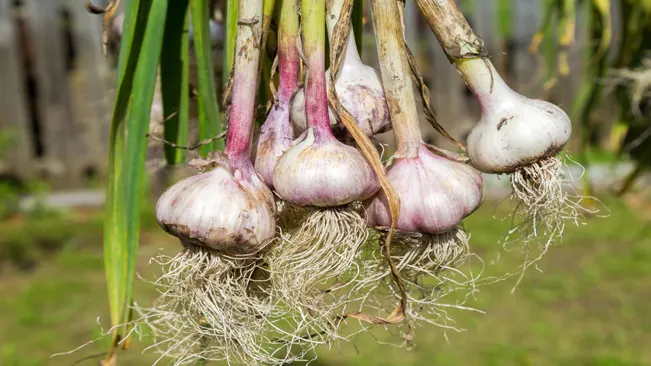
- Natural Pest Repellent: Garlic is a well-known natural deterrent for several pests, including aphids, which can be a common problem for strawberry plants.
- Fungicide Properties: Additionally, garlic has natural fungicidal properties, which can help protect strawberries from various fungal infections.
Thyme
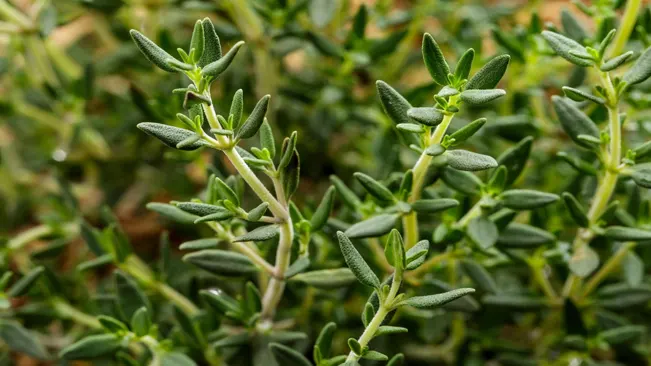
- Weed Suppression: It acts as an effective ground cover, suppressing weed growth around strawberry plants.
- Attracts Beneficial Insects: Thyme flowers can attract beneficial insects, which can aid in pollination and pest control.
- Pest Repellent: The aromatic oils in thyme can deter several garden pests.
Spinach
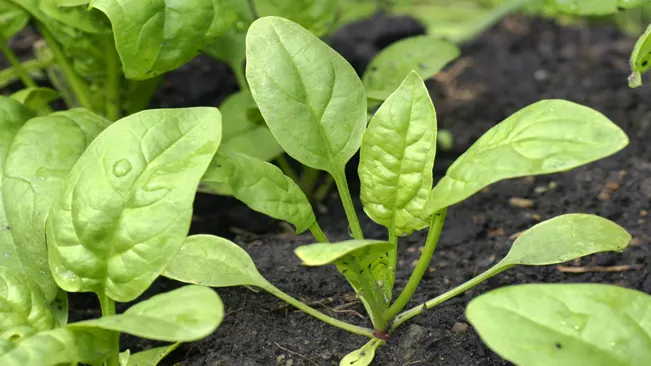
- Similar Growing Conditions: Both plants thrive under similar conditions, making them good garden companions.
- Efficient Space Utilization: Spinach, being a leafy vegetable, occupies a different space niche, allowing for efficient use of garden space.
Chives and Onions
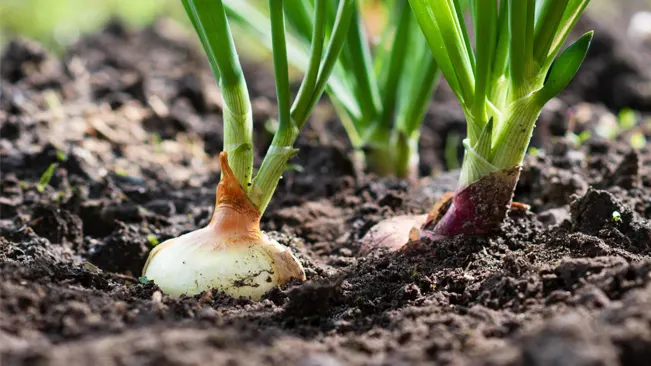
- Insect Deterrent: Both chives and onions are effective in repelling a variety of insects. Their strong scents are unappealing to many pests that might otherwise infest strawberry plants.
- Fungal Disease Prevention: These plants are also known to have anti-fungal properties, which can help protect strawberries from diseases like powdery mildew and gray mold.
Benefits of Companion Planting
Pest Control
Companion planting is a natural approach to managing pests. By strategically placing certain plants near strawberries, you can significantly reduce the population of harmful insects and other pests. For example:
- Marigolds: Their roots release a substance that can deter nematodes, which are harmful to strawberry roots.
- Garlic: Known to repel aphids, which are common pests for strawberries.
- Chives and Onions: These can deter both insects and fungal diseases.
Improved Pollination
- Certain companion plants attract pollinators, which is crucial for the fruiting process in strawberries. Blossoms need to be pollinated to produce fruit, and attracting more bees and beneficial insects can increase the chances of successful pollination. Plants like borage and lavender are excellent for this purpose. Their bright and fragrant flowers are irresistible to bees, butterflies, and other pollinating insects.
Companion plants play a critical role in attracting pollinators to strawberry plants. Here’s how borage and lavender, in particular, contribute to this process:
Borage
- Attracts Pollinators: Borage is renowned for its ability to attract bees and other pollinators. Its bright blue, star-shaped flowers are a magnet for bees, which are primary pollinators for strawberries.
- Enhances Strawberry Health: Apart from attracting pollinators, borage is also believed to improve the overall health and flavor of strawberries, potentially due to subtle interactions in the soil or through its impact on the local insect population.
- Continuous Blooming: Borage blooms continuously throughout the growing season, ensuring a consistent presence of pollinators in the garden.
Lavender
- Irresistible to Pollinators: Lavender’s fragrant and vibrant flowers are exceptionally good at attracting a range of pollinators, including bees and butterflies.
- Dual Purpose: Lavender not only attracts pollinators but also adds beauty and aroma to the garden. Its calming scent can be a delightful addition to the sensory experience of a garden.
- Pest Repellent Qualities: Lavender also has the added benefit of repelling certain unwanted insects, thereby serving a dual purpose of attracting beneficial insects while deterring pests.
Soil Health
Companion plants contribute to the health of the soil in various ways:
- Nitrogen Fixation: Legumes, like bush beans, can fix atmospheric nitrogen into the soil, making it available for strawberries which are heavy feeders of nitrogen.
- Organic Matter: Decaying roots and leaves from companion plants add organic matter to the soil, improving its structure and fertility.
- Prevent Soil Erosion: Low-growing plants, like creeping thyme, cover the soil surface, reducing erosion and retaining moisture.
Spatial Efficiency
Companion planting is particularly advantageous for gardeners with limited space. By growing compatible plants together, you can maximize the use of your gardening area. For instance:
- Vertical Layering: Tall plants like sunflowers can provide shade and support for strawberries, which prefer cooler ground temperatures.
- Ground Cover: Low-lying plants like thyme or spinach can cover the ground between strawberry plants, reducing weed growth and maintaining soil moisture.
Conclusion
Strawberries are versatile plants that benefit greatly from companion planting. By pairing them with plants like borage, marigolds, bush beans, garlic, thyme, and spinach, gardeners can encourage healthier growth, better yields, and natural pest control. Companion planting is an excellent strategy for creating a thriving, diverse, and sustainable garden.
FAQs (Frequently Asked Questions)
- What are the best flowers to plant with strawberries?
Borage and marigolds are excellent choices. Borage attracts pollinators and may enhance strawberry flavor, while marigolds deter soil nematodes and pests. - Can herbs be planted alongside strawberries?
Yes, herbs like thyme and sage are good companions. Thyme, especially creeping thyme, acts as ground cover and pest deterrent, while sage repels insects. - Are there any vegetables that pair well with strawberries?
Leafy greens like spinach and lettuce are great companions, as they have similar water and light requirements and help to maximize garden space efficiently. - Do companion plants help in pest control for strawberries?
Yes, many companion plants, such as garlic and marigolds, naturally repel common pests like aphids and nematodes, reducing the need for chemical pesticides. - Can companion planting improve the taste of strawberries?
While subjective, some gardeners believe that certain companions like borage can subtly enhance the flavor of strawberries. - How do companion plants affect strawberry pollination?
Flowers like borage attract bees and other pollinators, which are essential for strawberry pollination and fruit development. - Is it beneficial to plant legumes with strawberries? Yes, planting legumes like bush beans can be beneficial as they fix nitrogen in the soil, which can be helpful for strawberry growth.
- Can companion planting help conserve water in a strawberry garden? Yes, companions like spinach and thyme provide ground cover, reducing water evaporation from the soil and thus conserving moisture.
- Are there any plants that should not be planted with strawberries? Avoid planting strawberries near members of the cabbage family (like broccoli and cauliflower), as they can attract pests and compete for nutrients.
- How does companion planting with strawberries affect garden biodiversity? Companion planting promotes a diverse ecosystem, attracting a variety of beneficial insects and improving soil health, which can lead to a more robust and resilient garden.

Kristine Moore
Forestry AuthorI'm Kristine Moore, a seasoned garden landscaping professional with over 30 years of experience. My extensive career has been dedicated to transforming outdoor spaces into stunning, sustainable landscapes. With a deep understanding of horticulture, design principles, and environmental stewardship, I have become a respected figure in the field, known for creating harmonious, visually appealing, and eco-friendly gardens. My commitment to excellence and continuous learning in landscaping trends and techniques has solidified my reputation as an expert in garden design and implementation.

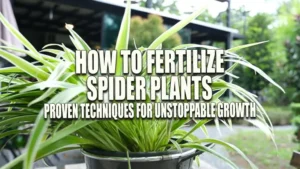






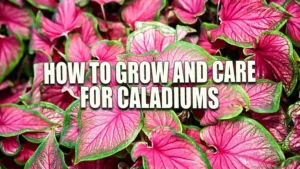


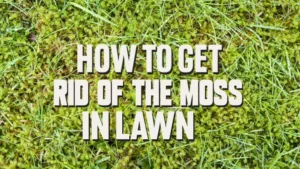

Leave your comment